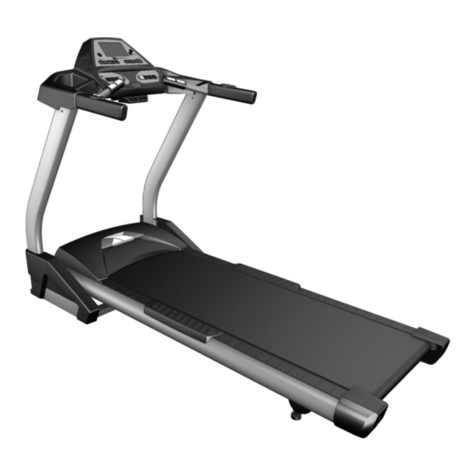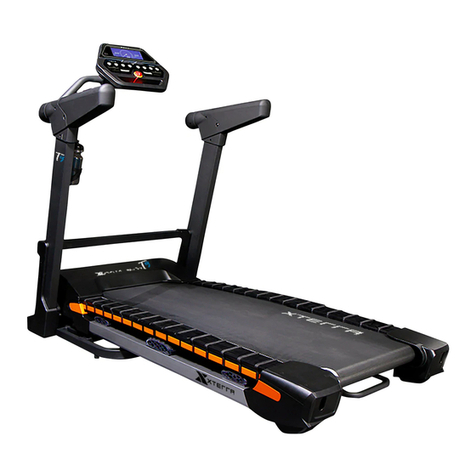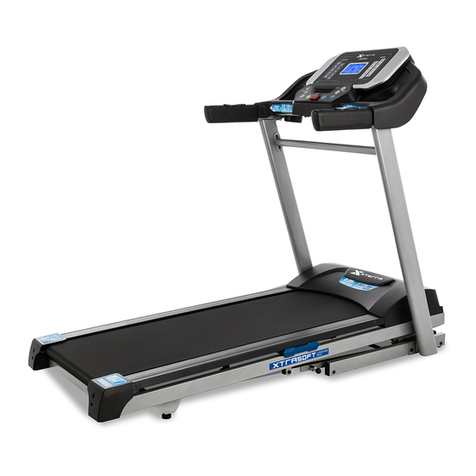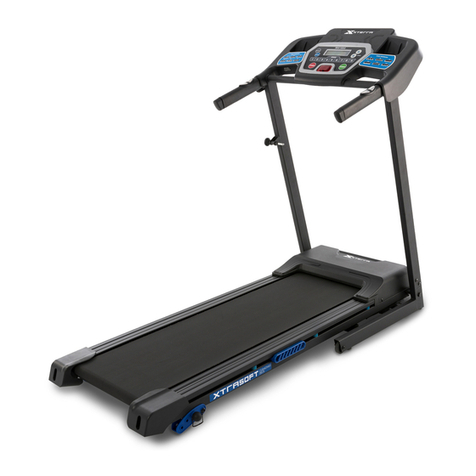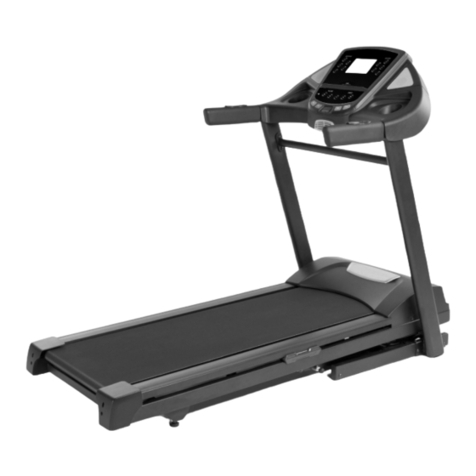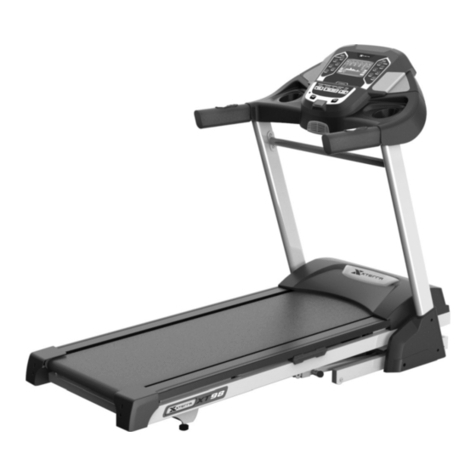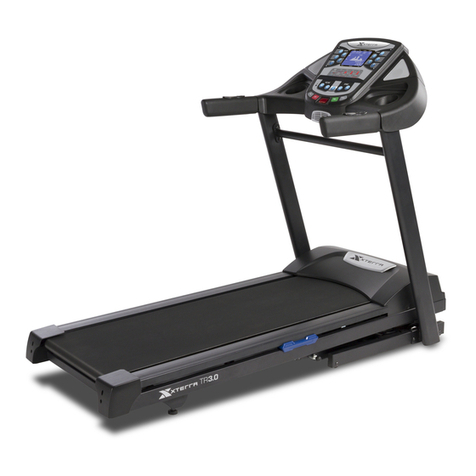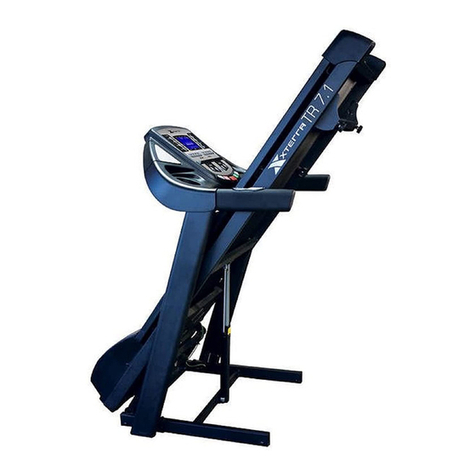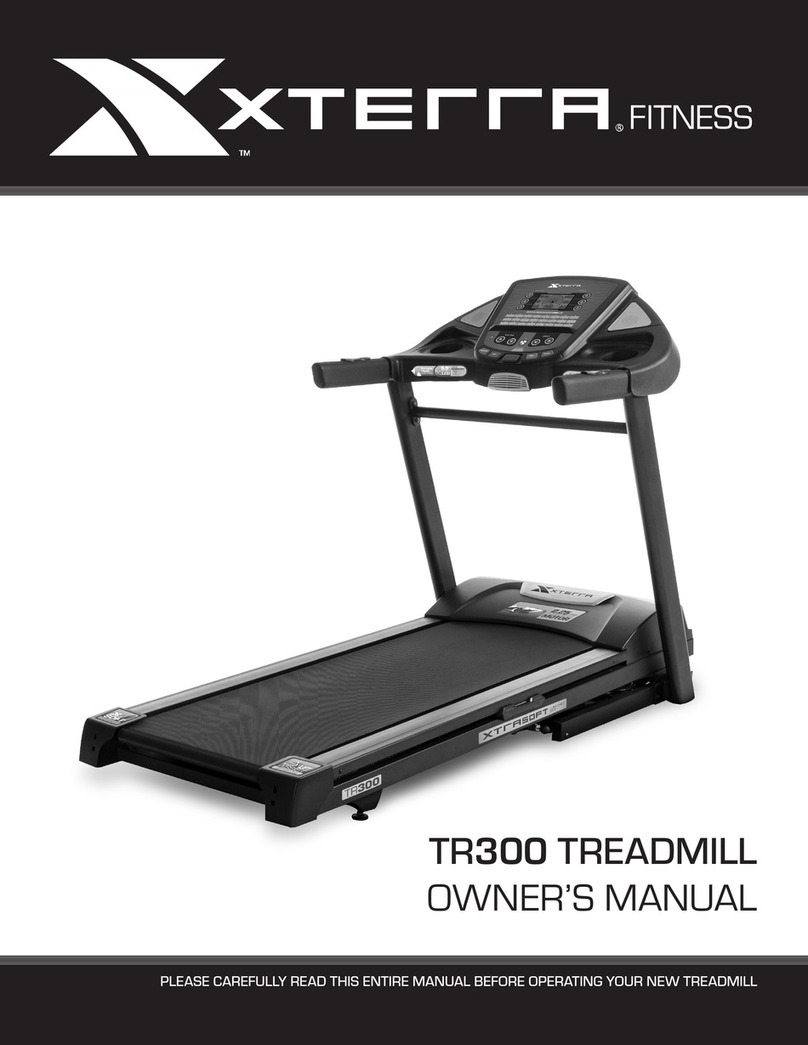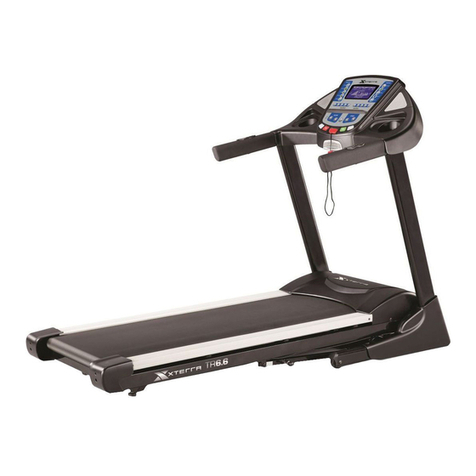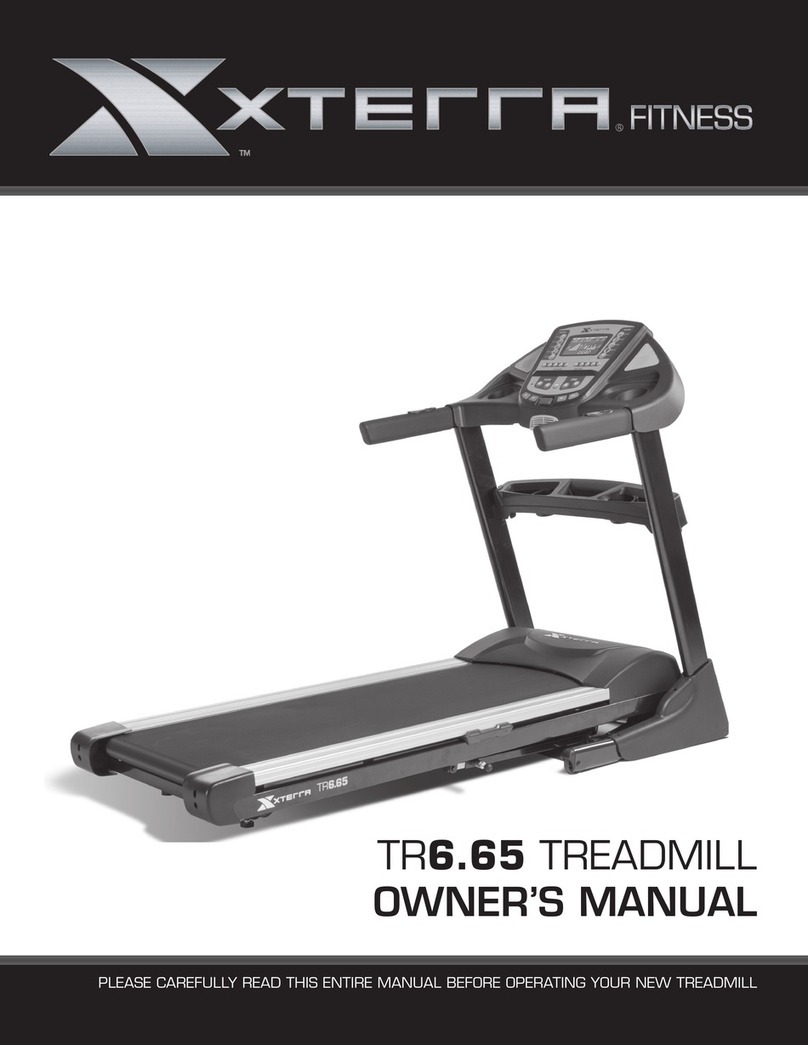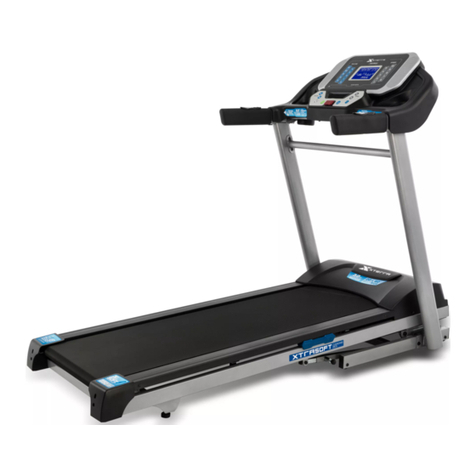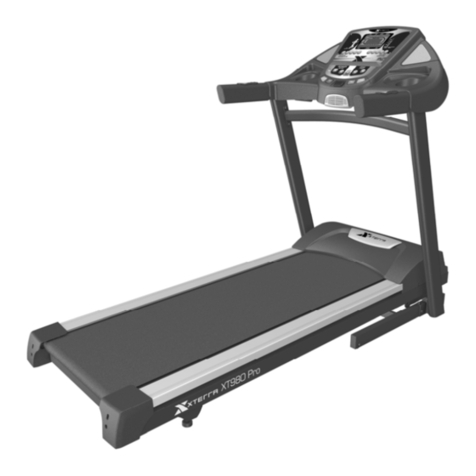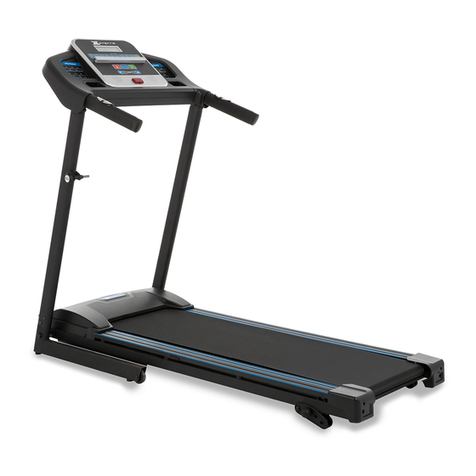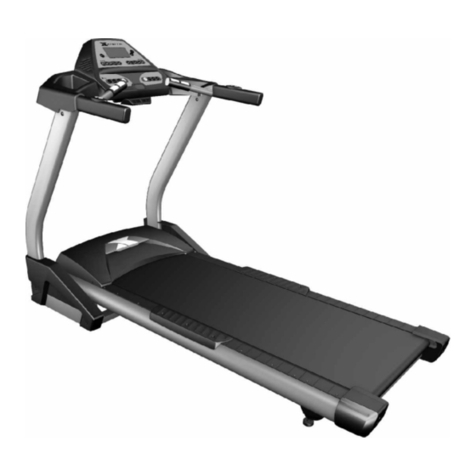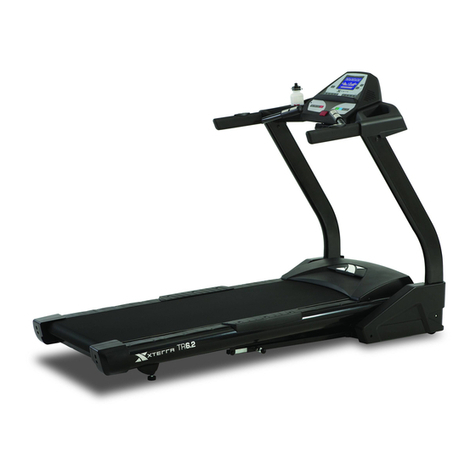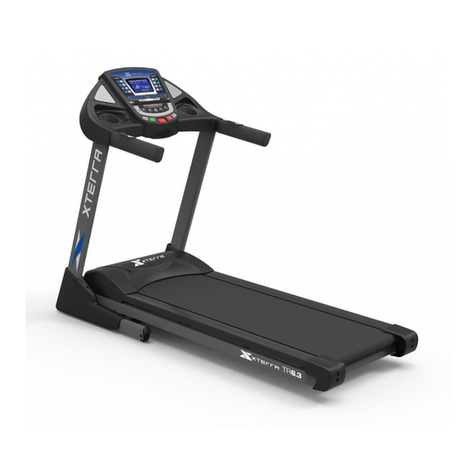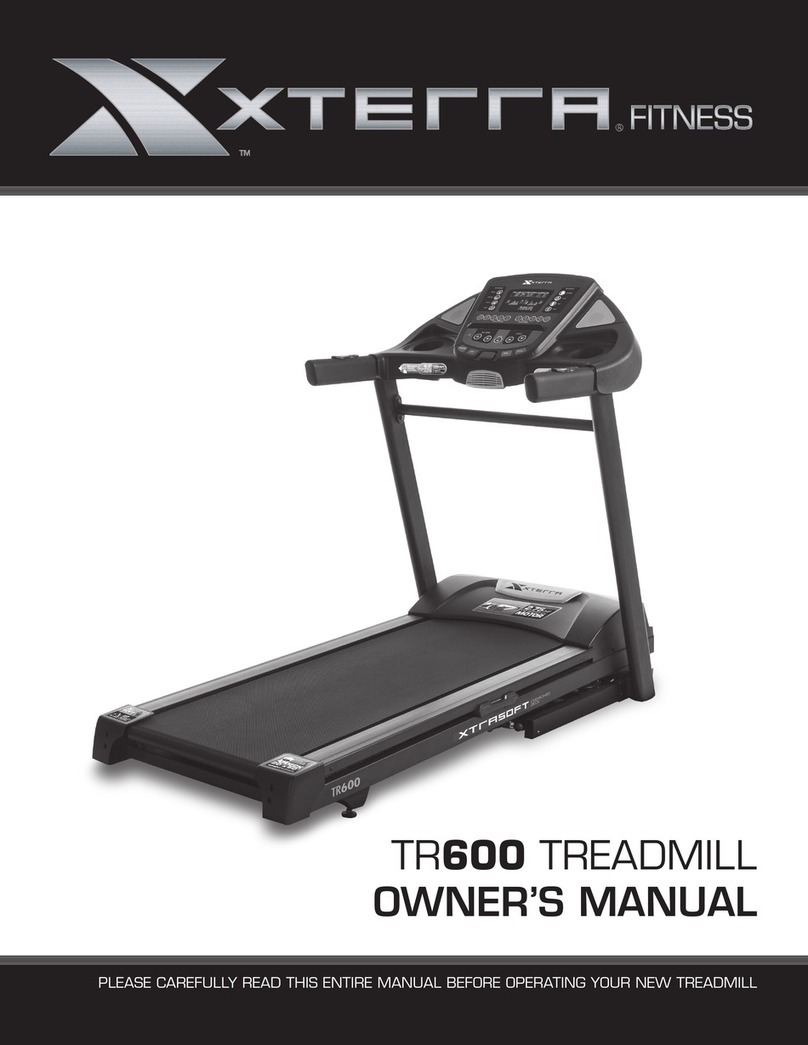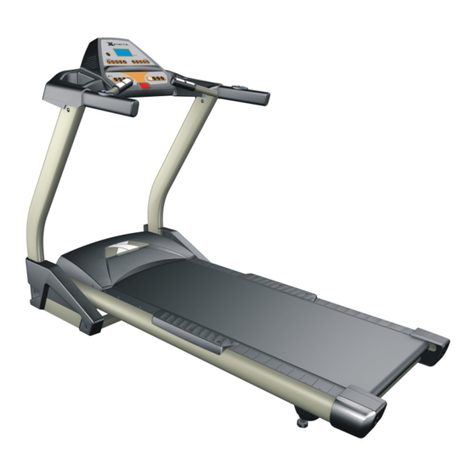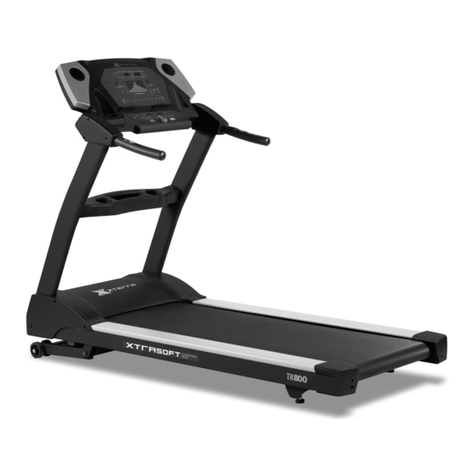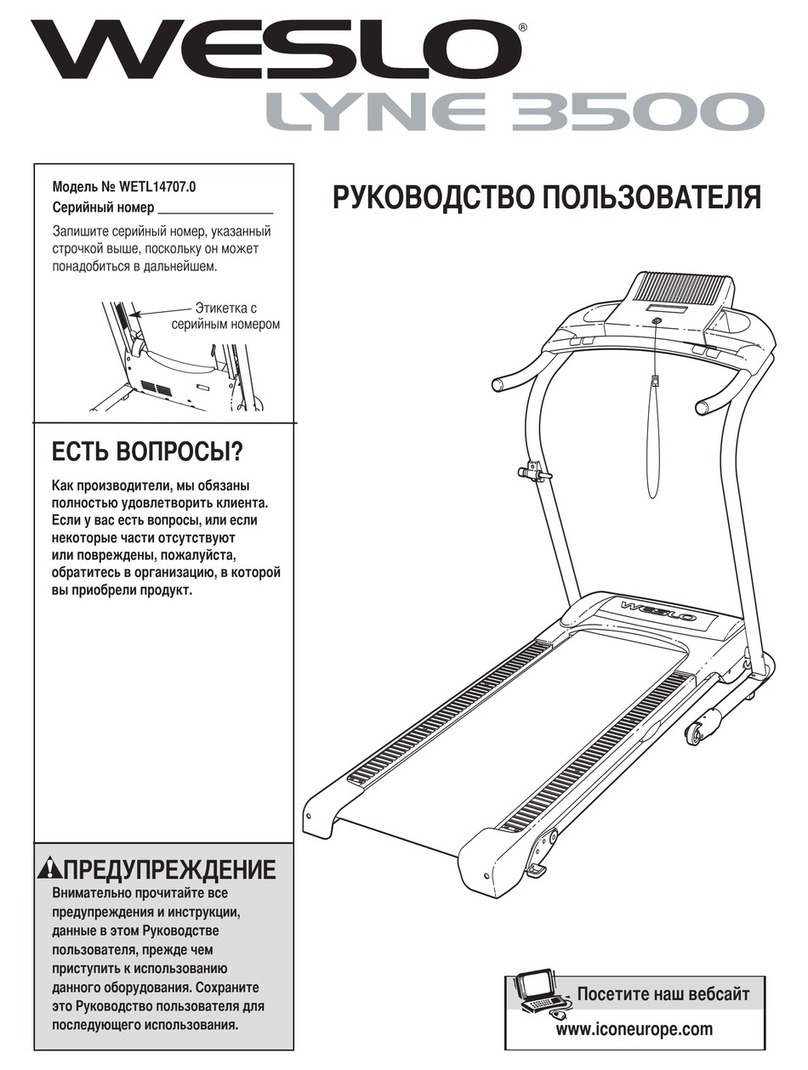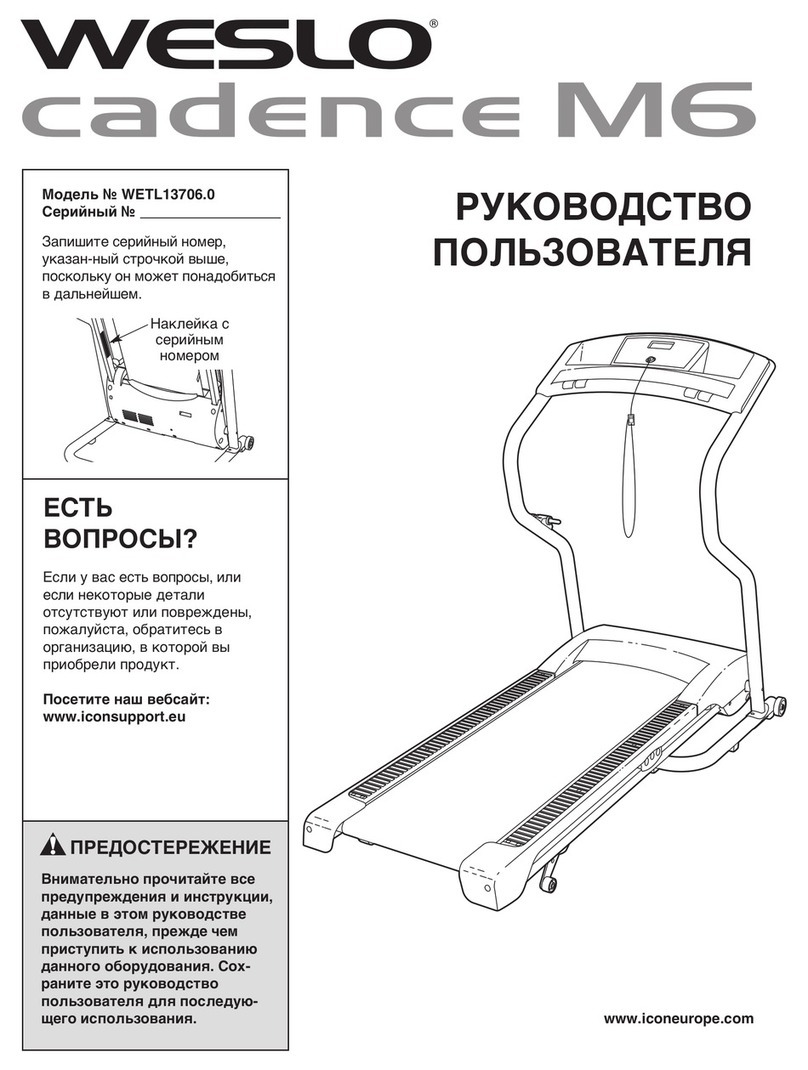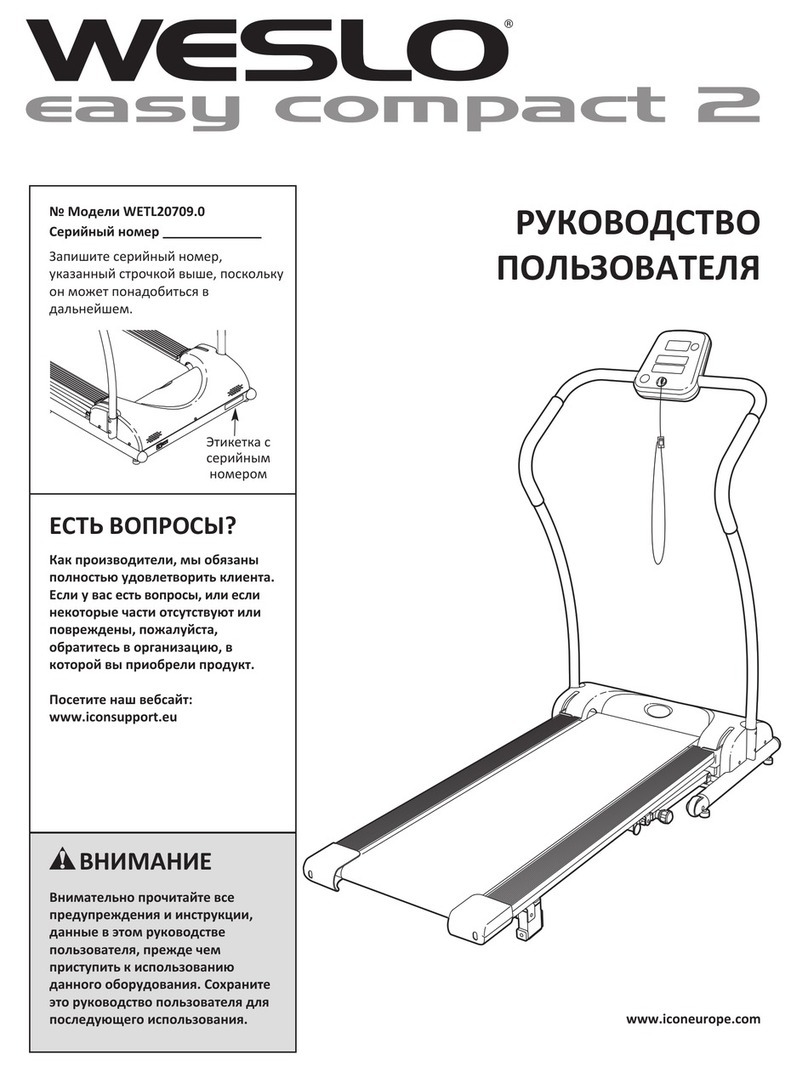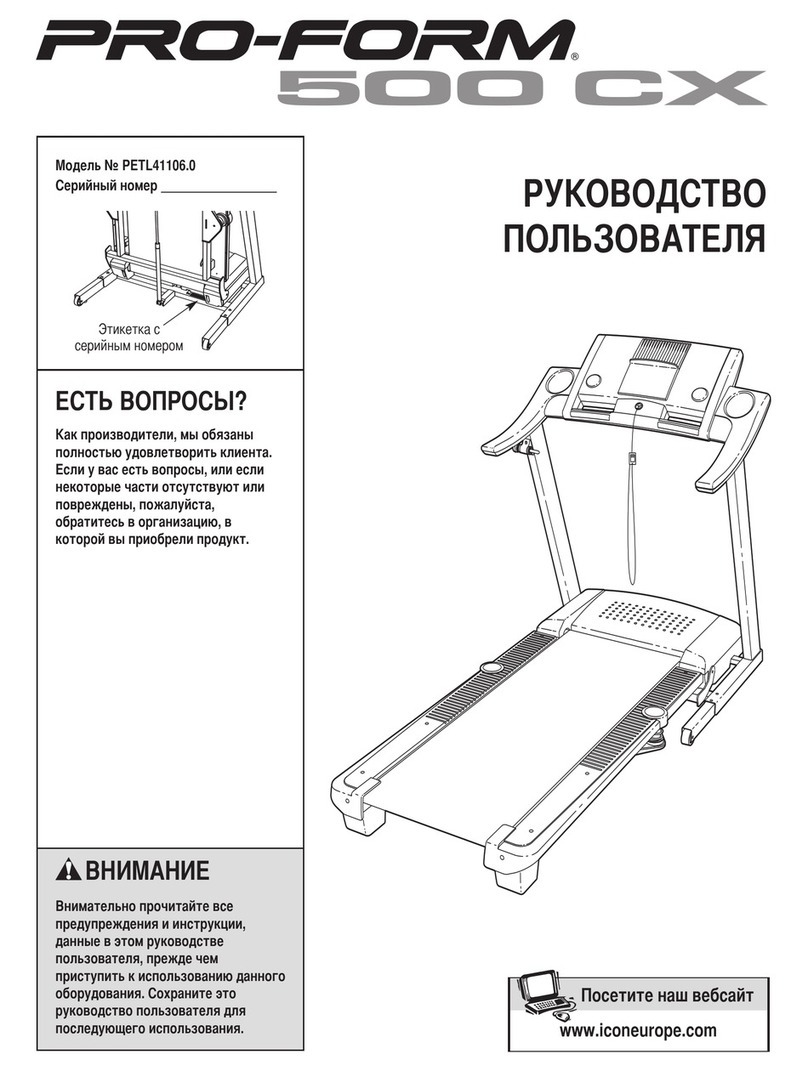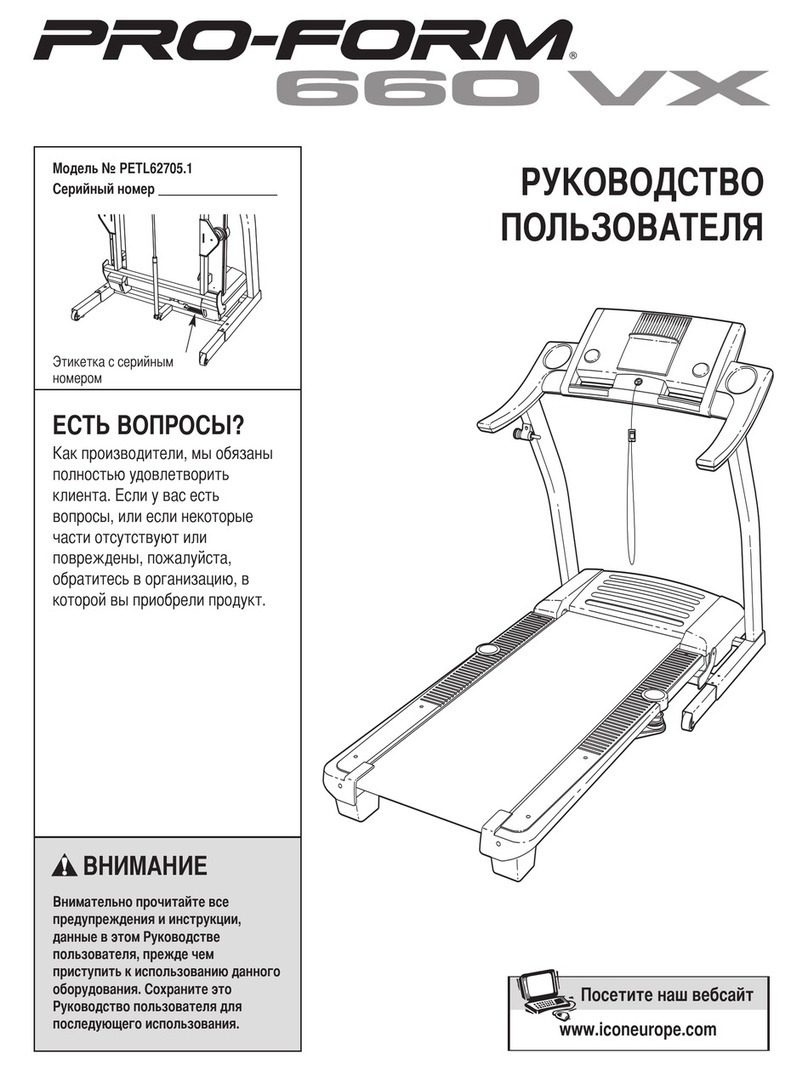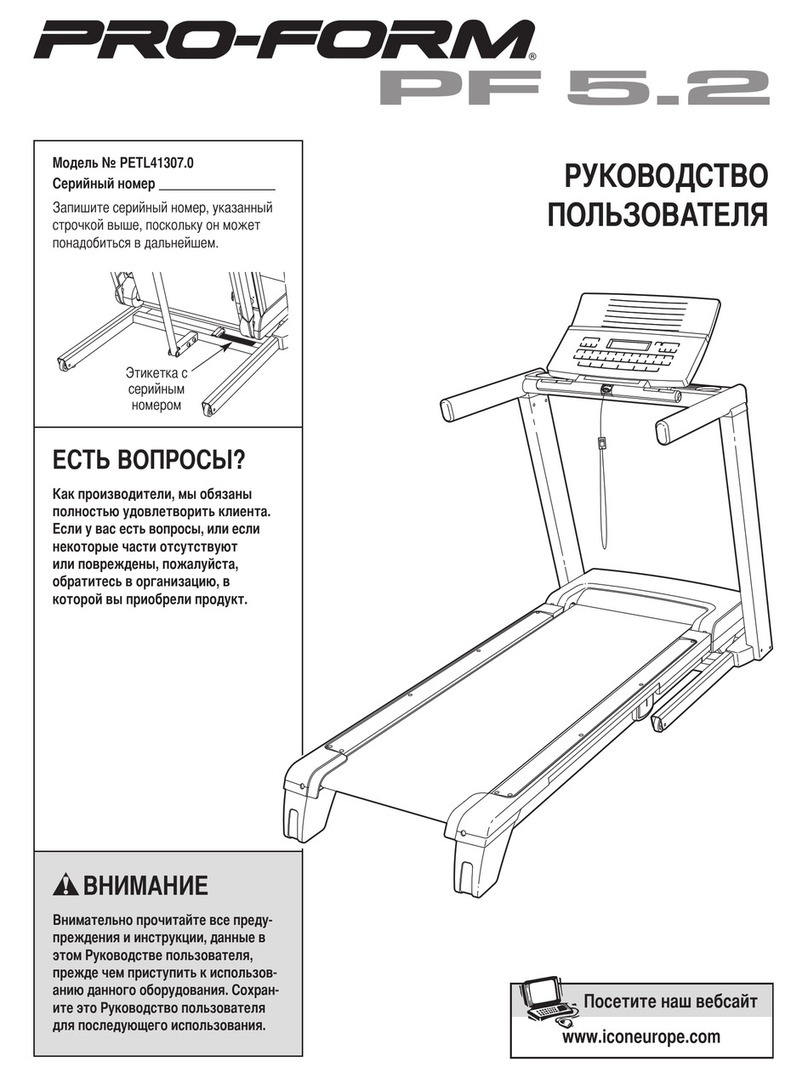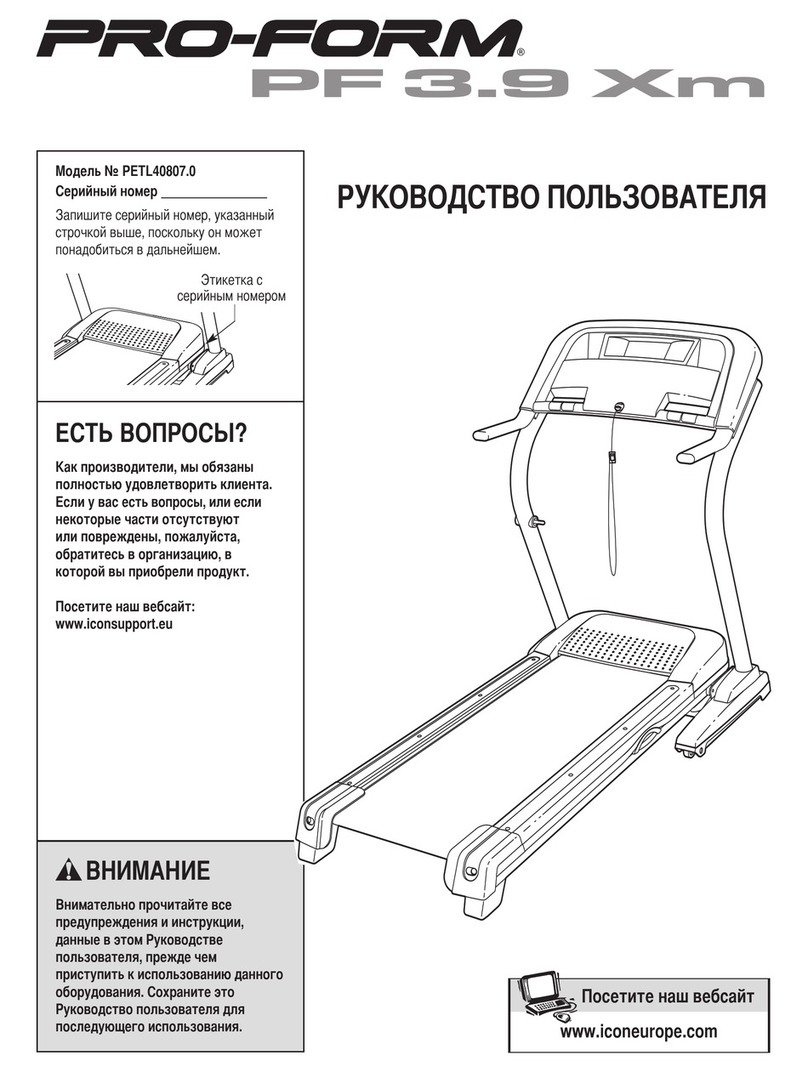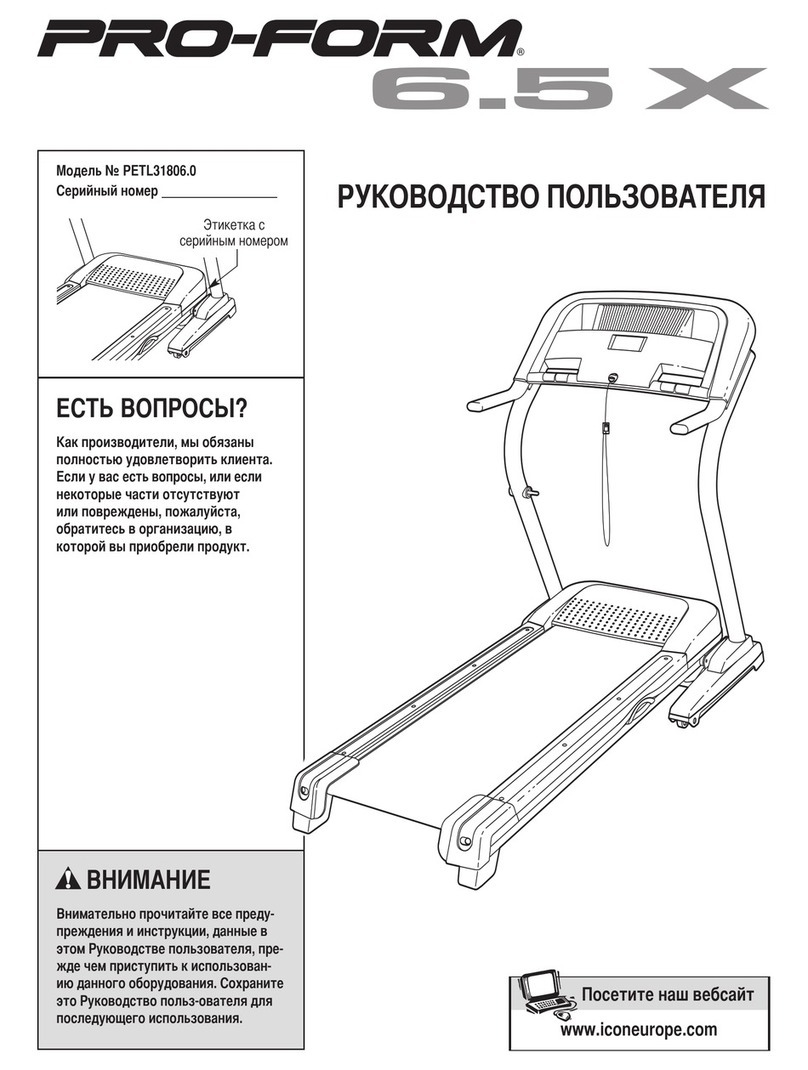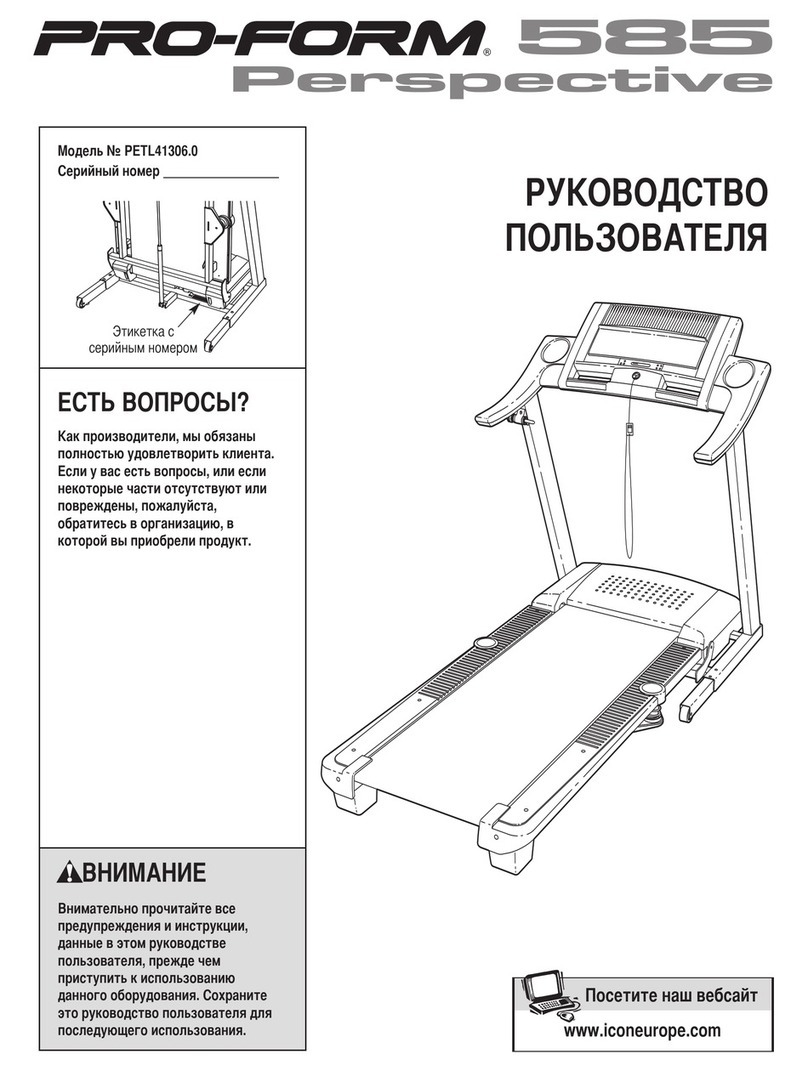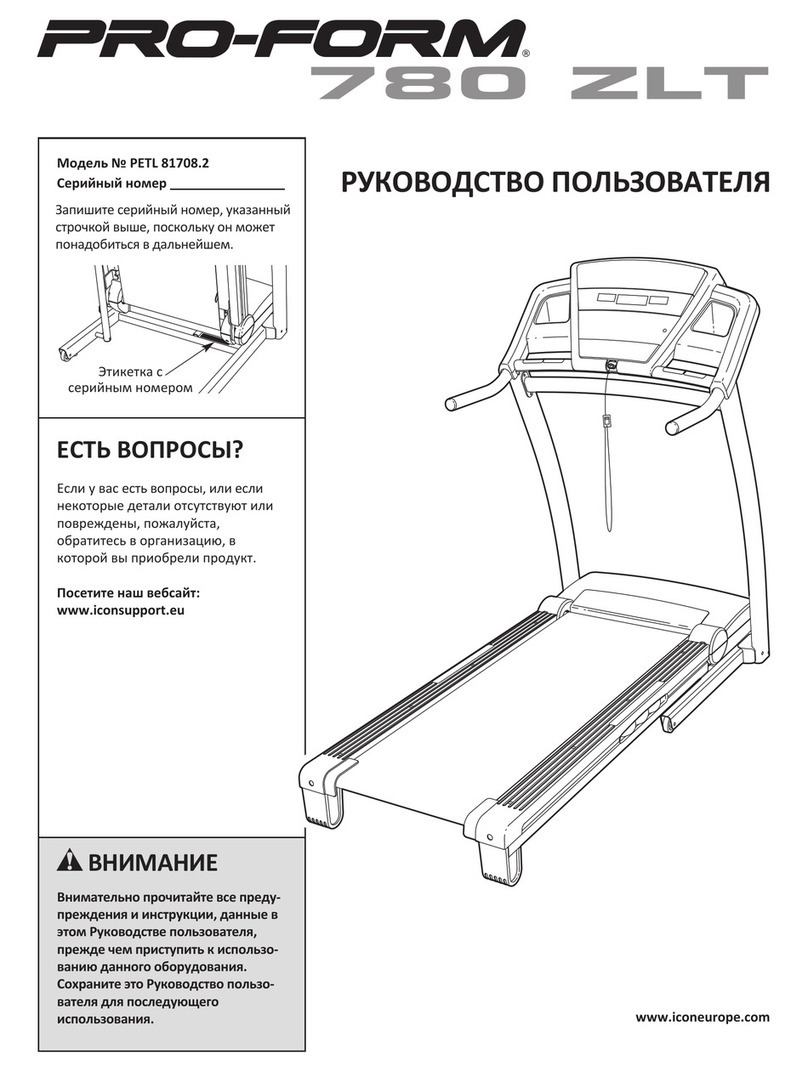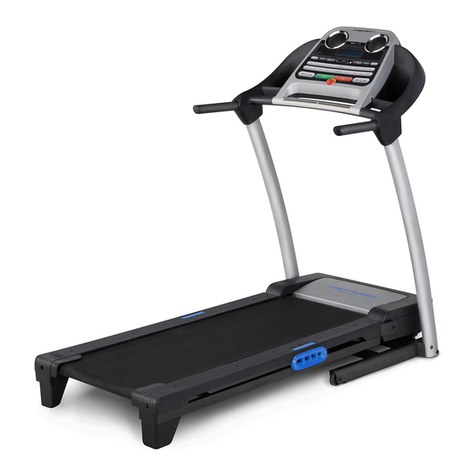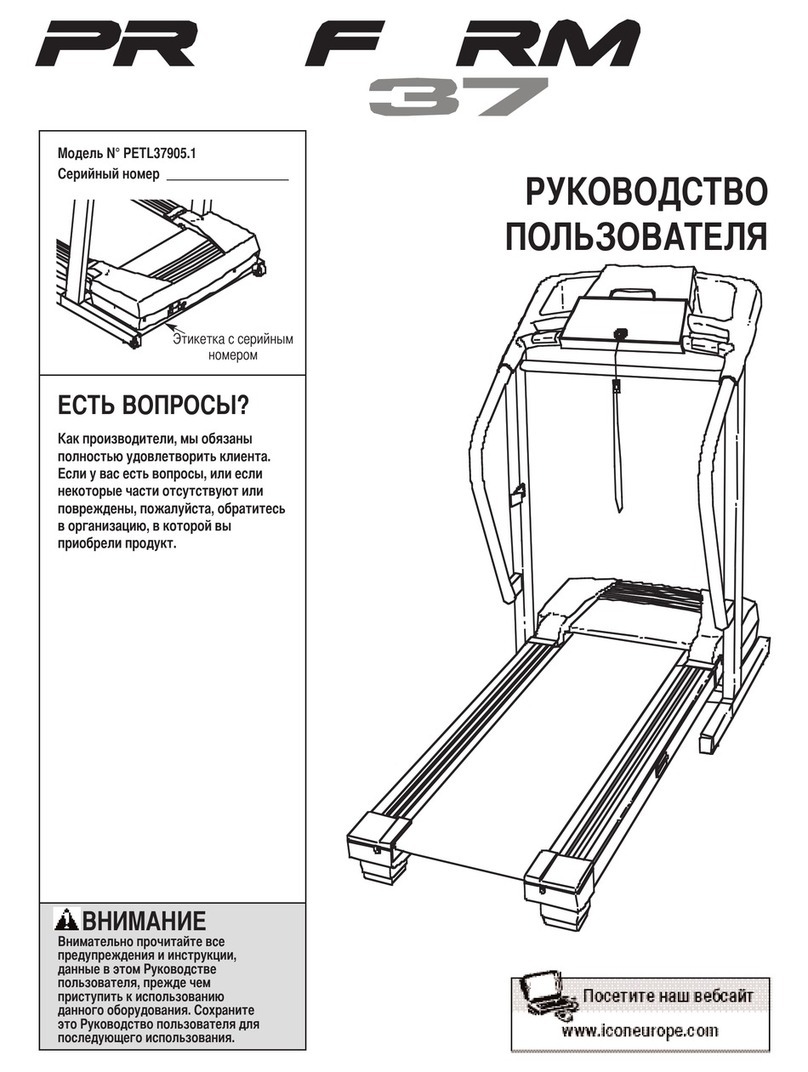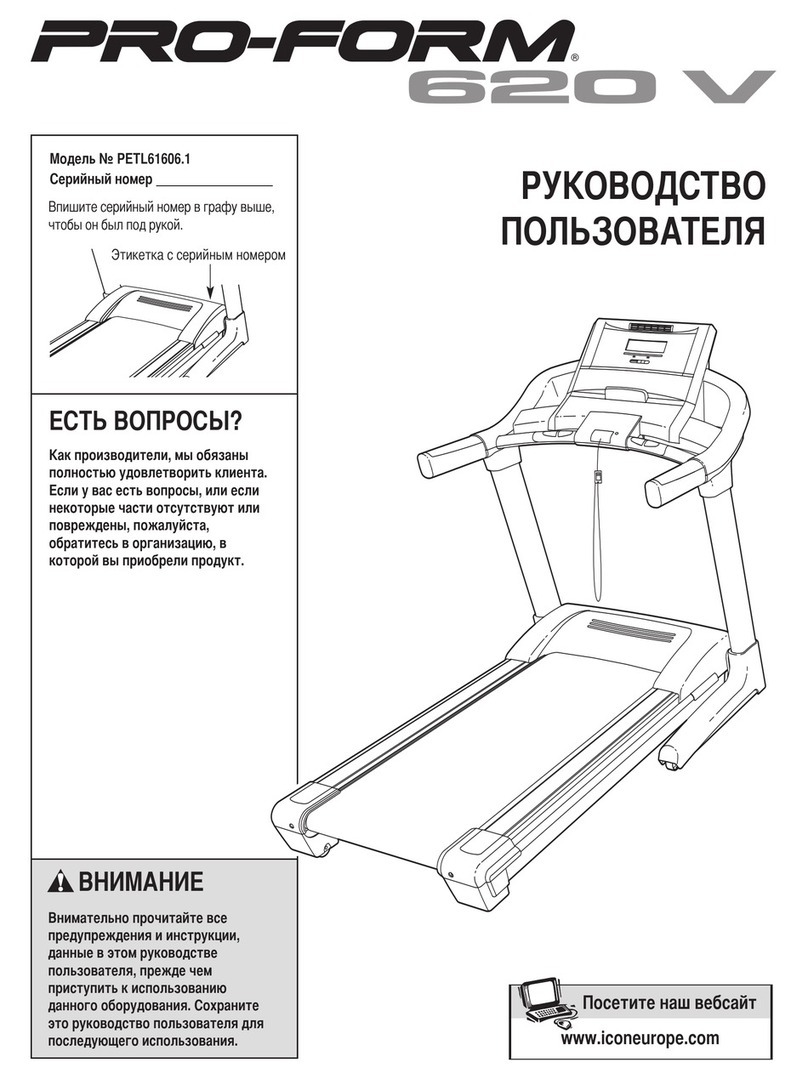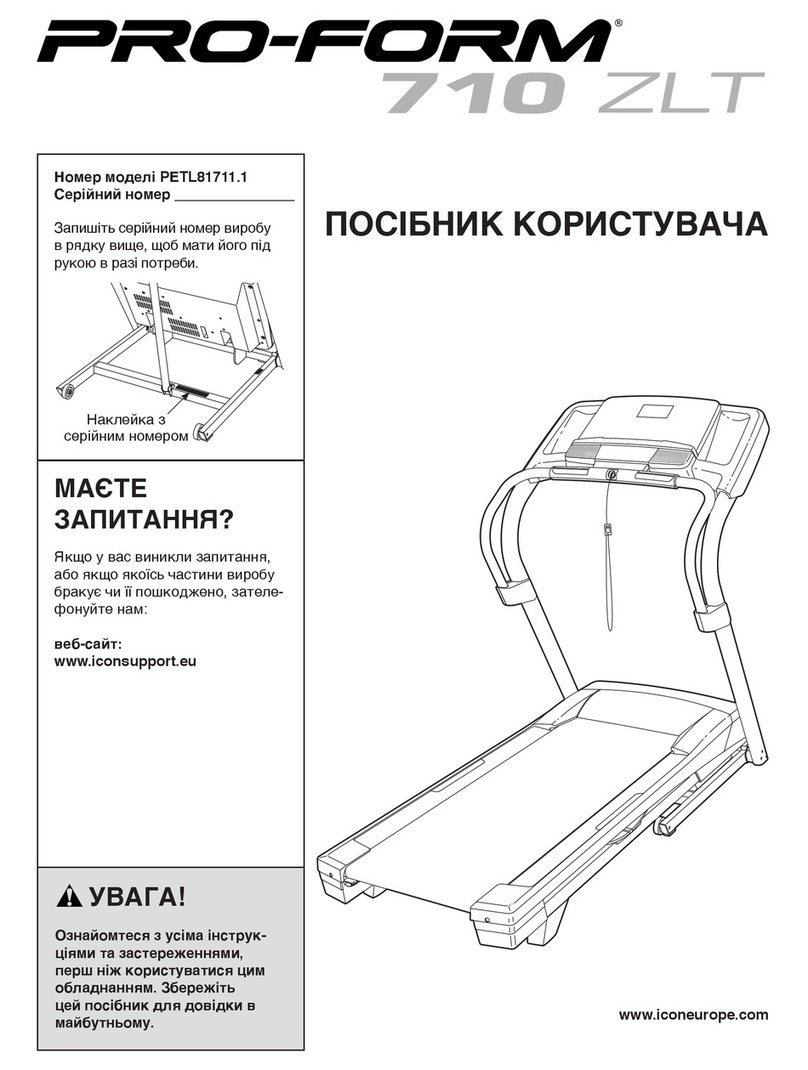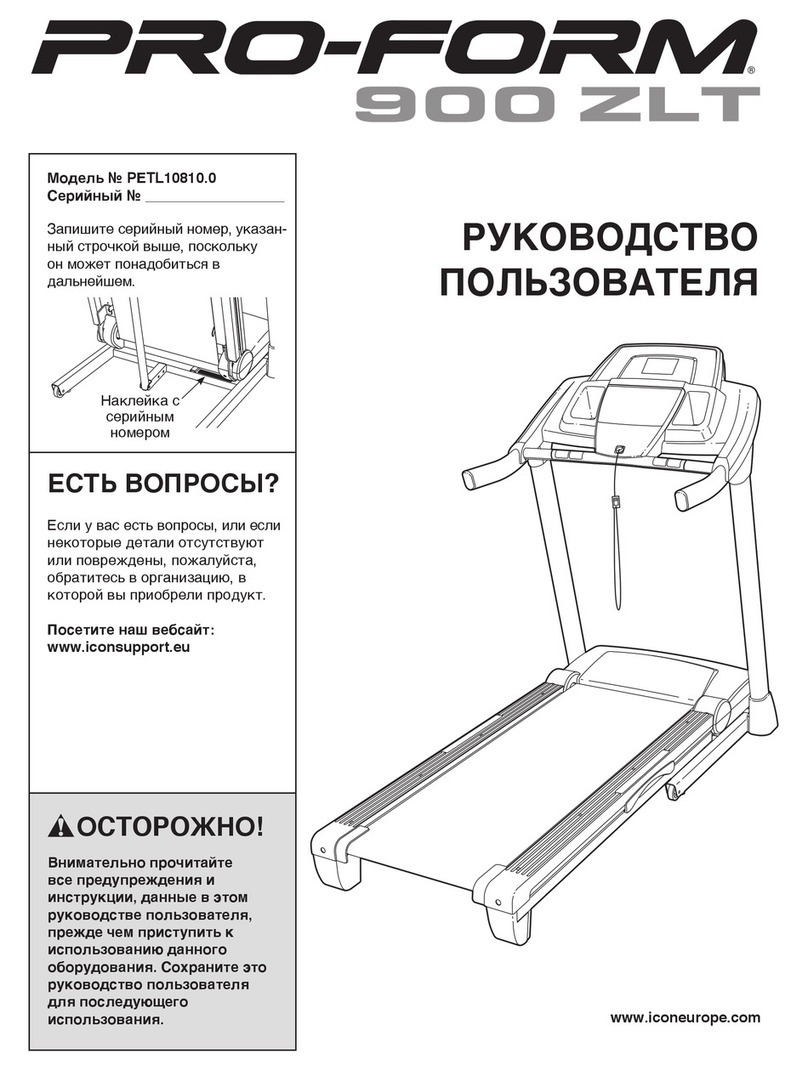
3
WARNING!
NEVER use a ground fault circuit interrupt (GFCI) wall outlet with this treadmill. As with any
appliance with a large motor, the GFCI will trip often. Route the power cord away from any
moving part of the treadmill including the elevation mechanism and transport wheels.
NEVER remove any cover without first disconnecting AC power. If voltage varies by ten percent (10%)
or more, the performance of your treadmill may be affected. Such conditions are not covered
under your warranty. If you suspect the voltage is low, contact your local power company or a
licensed electrician for proper testing.
NEVER expose this treadmill to rain or moisture. This product is NOT designed for use outdoors,
near a pool or spa, or in any other high humidity environment. The temperature specification is 40
degrees c, and humidity is 95%, non-condensing (no water drops forming on surfaces).
Circuit breakers: Some circuit breakers used in homes are not rated for high inrush currents that
can occur when a treadmill is first turned on or even during normal use. If your treadmill is tripping the
house circuit breaker (even though it is the proper current rating) but the circuit breaker on the
treadmill itself does not trip, you will need to replace the home breaker with a high inrush type. This is
not a warranty defect. This is a condition we as a manufacture have no ability to control. This part is
available through most electrical supply stores. Examples: Grainger part # 1D237, or available online
at www.squared.com part # QO120HM.
This product must be grounded. If the treadmill’s electrical system should malfunction or
breakdown grounding provides a path of least resistance for electric current, reducing the risk of
electric shock. This product is equipped with a cord having an equipment-grounding plug. The plug
must be plugged into an appropriate outlet that is properly installed and grounded in accordance
with all local codes and ordinances.
DANGER - Improper connection of the equipment-grounding conductor can result in
a risk of electric shock. Check with a qualified electrician or serviceman if you are in doubt
as to whether the product is properly grounded. Do not modify the plug provided with the
product if it will not fit the outlet; have a proper outlet installed by a qualified electrician.
This product is for use on a nominal 220-volt circuit, and has a grounding plug that looks like the
plug illustrated below. A temporary adapter that looks like the adapter illustrated below may be
used to connect this plug to a 2-pole receptacle as shown below if a properly grounded outlet is
not available. The temporary adapter should be used only until a properly grounded outlet, (shown
below) can be installed by a qualified electrician. The green colored rigid ear-lug, or the like,
extending from the adapter, must be connected to a permanent ground such as a properly
grounded outlet box cover. Whenever the adapter is used, it must be held in place by a metal
screw.
Grounded Outlet
Grounding Pin Grounded Outlet
Metal Screw
Adapter
Tab of
Grounding
Screw
Grounding Instructions
Important Electrical Information
